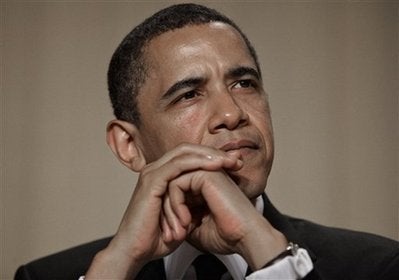
This was originally published as an exclusive commentary for Politico.
President Barack Obama will fill nearly 600,000 government jobs, or close to a third of the current federal work force, during his four-year term, offering a once-in-a-generation opportunity to remake our depleted and often embattled civil service.
This hiring explosion, a product of baby boomer retirements, Obama's ambitious spending plans and the economic stimulus package could mirror the 1930s under Franklin D. Roosevelt and the 1960s under John F. Kennedy, when a huge influx of highly capable people were brought into government and served the nation for decades.
The president's economic recovery program is premised on short-term stimulus spending and tax cuts and multiyear public investments in health care, energy and education to create sustained growth. He must follow the same path for our government, hiring now to meet immediate needs and investing smartly in the next four years to create a revitalized federal work force for the long term.
This opportunity comes at a pivotal time.
The government is facing growing and complex demands and requires a specialized work force of engineers, scientists, accountants, information technology professionals, acquisition and contract experts, doctors, nurses and skilled employees in many other important professions.
Warm bodies are not enough. We need talented and engaged civil servants to oversee the financial markets, monitor our food supplies, safeguard our computer networks, make smart procurement decisions, ensure our national security, protect the environment and manage effectively the billions of dollars in new infrastructure investments.
Unfortunately, the federal public service has been downsized, demonized and outsourced in recent decades -- leaving it bereft of many critical skills and hard-pressed to properly manage programs and policies even in ordinary times.
There are now huge numbers of well-educated professionals out of work, a new enthusiasm for public service created by Obama's election and increasing expectations that the government must be part of the solution to the nation's ills.
Yet the chance to capitalize on this moment and begin to effectively recharge the diminished federal work force could easily be thwarted by a government personnel system that lacks the ability to attract, hire, train and retain the very best talent, and by a management structure that is antiquated and inflexible.
The federal government is the nation's largest employer, but it hardly operates like a well-run business with regard to its work force management. We need to invest in our civil service in a way that makes it the role model for the world.
The president has shown some encouraging signs. He has named a number of Cabinet secretaries publicly committed to good management, as well as a director of the Office of Personnel Management who understands the shortcomings. He has approved staffing increases in some long-starved areas, nominated a chief performance officer and issued executive orders on contracting reform and on making government more transparent.
But Obama must do more, making it clear to agencies and his top political appointees that improving government operations and strengthening the work force is a top presidential priority -- and that the success of the administration depends on the health and ability of our federal government to execute and implement its initiatives.
The president -- in some cases with the aid of Congress -- also should:
• Create a governmentwide strategic plan that provides a road map for identifying and meeting current and future work force needs, including delineation of the appropriate roles for contractors and grantees. We must understand our work force requirements and skill gaps and use that information to recruit and hire the best talent.
• Fix the nightmarish hiring process. Government needs to hire faster and better. The process needs to be easier for the applicant (who should be required to submit a résumé, rather than traverse an obstacle course), and it needs to be transparent. Applicants should know where they are in the process, just like they can track a FedEx package they've sent.
• Ensure that government managers, now largely disconnected from the hiring process, take ownership of the talent hunt and have competent HR professionals to help them build a highly skilled and motivated work force that meets the country's needs.
• Invest heavily in training workers and managers and foster leadership development. "The People Factor," a new book by Linda Bilmes and W. Scott Gould, makes a compelling case that a $10 billion investment in human capital would return nearly $300 billion to $600 billion through higher productivity, better contact management and a significant reduction in waste and duplication.
The president must be clear that his long-term view of creating a prosperous nation also applies to improving the capacity and the talent of the civil service. The president's legacy will depend not only on the wisdom of his policies but also on the quality of people he brings into government.
